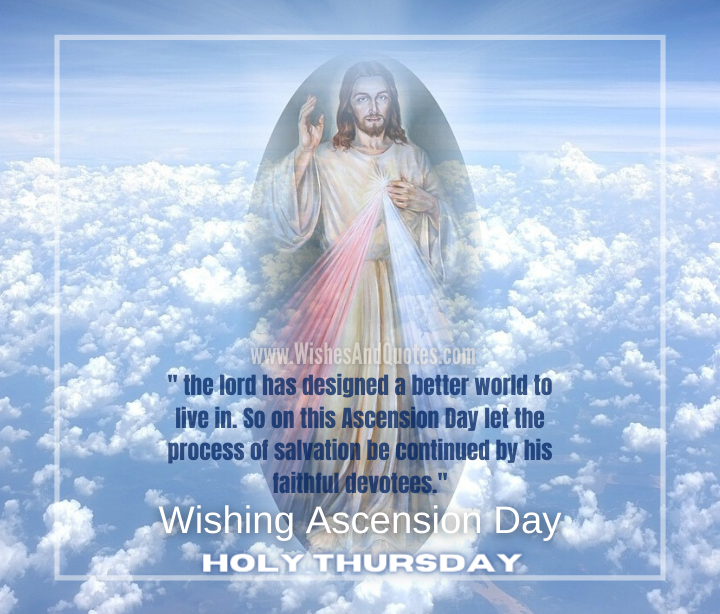
The Finnish calendar also provides for special flag flying days. But when Saturdays ceased to be working days, new contracts removed these shortenings from other holiday eves, except from Midsummer and Christmas Eve which also became de facto holidays. These are Maundy Thursday, the day before May Day and New Year's Eve.Īlready before the 5 days working week was generally adopted in Finland in the late 1960s, working hours in most cases were shorter on Saturdays (4.5 h) than on other weekdays (8 h), but they were equally shorter also on all eves of public holidays, for example on the eve of Epiphany, the eve of All Saints' Day, and even including Christmas Eve and Midsummer Eve. A number of the less important main holidays are also preceded by de facto half days, meaning that in some (but not all) offices working hours are then shorter than normally.
#Ascension holidays full#
They hold this de facto status partly due to some statements in legislation but also because most employment contracts provides for these days as full holidays. Surprisingly they are not officially called holidays and are not so marked in calendars, but for most people, are not working days, and in practice they differ from official holidays only in that most shops are open on those days from early morning till noon. More holidays were moved in 1973: Epiphany to the Saturday following 5 January and Ascension Day to the Saturday before the traditional Thursday, but these revisions were reversed in 1991.Ĭhristmas Eve and Midsummer Eve might very well be the single most important holidays during the entire year for Finns. In 1955, Midsummer day was moved to the Saturday following 19 June, the feast of the Annunciation to the Sunday following 21 March (or, if this coincides with Easter or with Palm Sunday, the Sunday before Palm Sunday), and All Saints' Day to the Saturday following 30 October. Several Christian holidays traditionally falling on working days or on fixed dates have been moved to Saturdays and Sundays. Easter Sunday and Pentecost are Sundays that form part of a main holiday and they are preceded by a kind of special Saturdays. When, in the late 1960s, the standard working week in Finland was reduced to 40 hours by an act of Parliament, it also meant that all Saturdays became a sort of de facto public holidays, though not official ones. The names of the Sundays follow the liturgical calendar and they can be categorized as Christian holidays. In addition to this all Sundays are official holidays but they are not as important as the special holidays.

The non-Christian holidays are May Day and the Independence Day of Finland. The main Christian holidays are Christmas, New Year's Day, Epiphany, Easter, Ascension day, Pentecost, Midsummer Day, and All Saints' Day. The official holidays can be divided into Christian and non-Christian holidays.


This was believed to have healing and therapeutic benefits.įor the non-religious, Ascension Day is just a lovely spring holiday, filled with festivals and other fun events.This article needs additional citations for verification. This traces back to a tradition from the distant past when people used to wake up at 3 AM on Ascension Day, to walk barefoot through the grass and sing and dance. A lot of people tend to wake up at dawn to go for an early morning walk or cycling tour.

There is, however, one tradition that has seeped into the entirety of Dutch culture and that is the tradition of the early-morning spring walk, known to the Dutch as ‘dauwtrappen’, literally ‘treading the dew’. In religious circles this is mostly celebrated with a church service and in some cases a procession. Ascension Day is believed to be the last time that Jesus appeared to his followers. Easter, Ascension Day and Pentecost form a fundamental unity, as they all revolve around the same salvific event. It is the 40th day after his resurrection from the grave and ten days before Pentecost. As you might have gathered from the name, according to the Bible, Ascension Day celebrates the ascension of Jesus Christ.


 0 kommentar(er)
0 kommentar(er)
